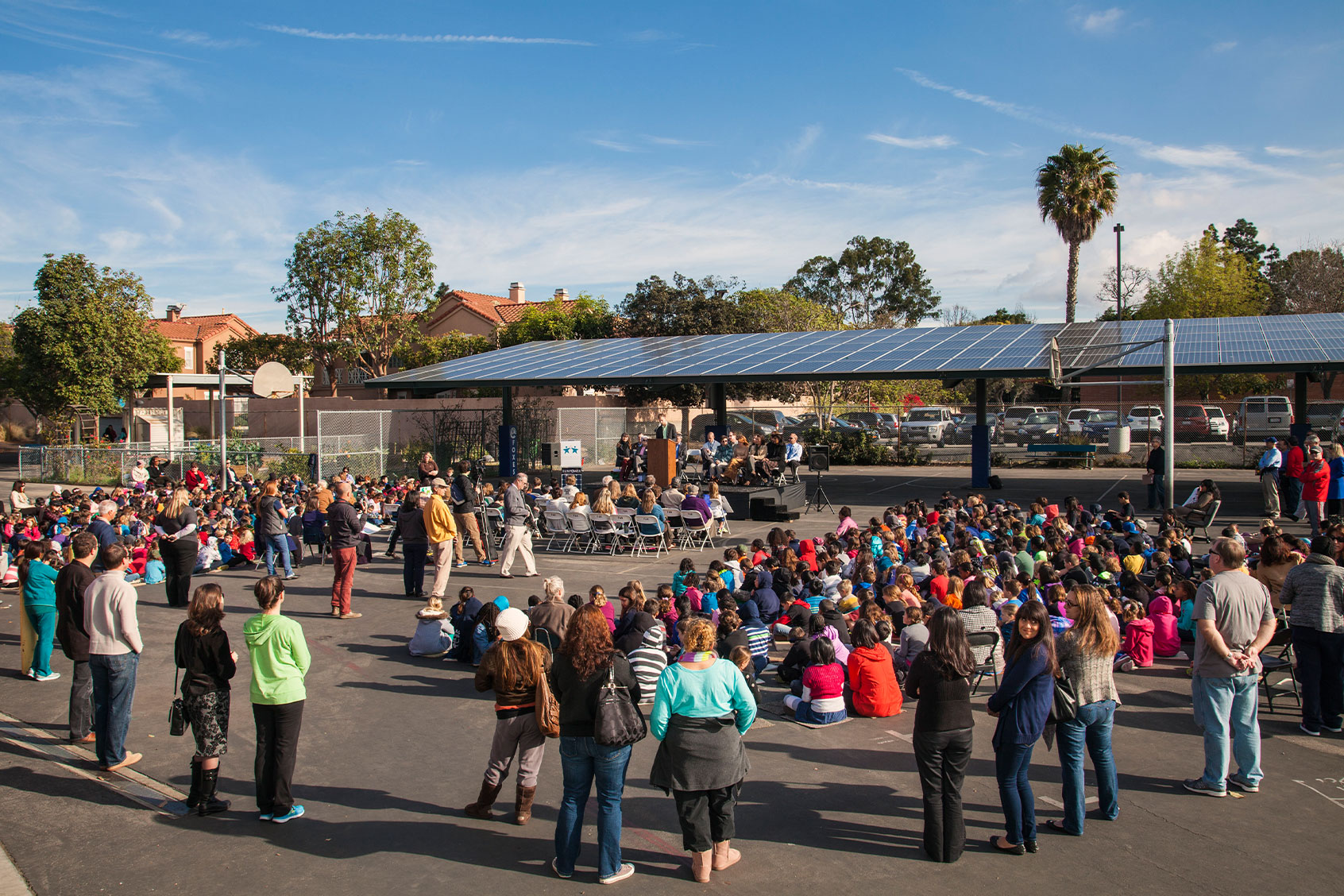In 2014, two solar energy groups published a report finding that only about 3,750 U.S. schools — out of a total of roughly 130,000 — were generating electricity from solar panels. But that number is on the rise.
According to the fourth edition of the “Brighter Future” report, released last week by the clean energy nonprofit Generation180, the number of U.S. schools using solar power has more than doubled in the last seven years, reaching roughly 8,400 by the end of 2021. These so-called “solar schools” now account for nearly 1 in 10 public, independent, and charter K-12 schools and serve more than 6 million students nationwide.
Tish Tablan, director of Generation180’s Solar for All Schools program and lead author of the report, called the number “an incredible milestone.” As some schools build new rooftop and ground-based solar arrays, others are subscribing to community solar programs. In some cases, schools with solar panels are generating enough electricity to sell it back to their communities. Since 2015, American schools’ total solar energy capacity has nearly tripled to 1,644 megawatts — enough to meet the electricity use of all the households in a city the size of Boston, Denver, or Washington, D.C.
At the front of the pack is California; the Golden State has both the greatest number of solar schools and the most solar capacity. It’s in fourth place for the percentage of schools that have solar power, trailing only Connecticut, Washington, D.C., and Hawai’i, where a full 40 percent of schools have adopted solar. And other states are making great gains — between 2019 and 2021, Washington state saw solar capacity grow more than eightfold, while Wisconsin, Illinois, Arkansas, and Virginia all at least doubled their installed solar capacity.
According to Tablan, much of this growth has been enabled by third-party financing models like power purchase agreements, or PPAs. With these agreements, developers pay to install and operate solar panels, while schools buy the electric output for a predetermined amount of time. Developers benefit because the agreements allow them to take advantage of federal tax credits and provide a stable source of income.
For schools, the agreements can slash thousands of dollars off their utility bills and remove up-front costs associated with solar installation — something that the Generation180 report says has been “critical” for solar expansion beyond the most affluent school districts. As of 2021, the report finds that 47 percent of the public schools with solar power are eligible for federal Title I Schoolwide Program funding, which indicates that at least 40 percent of their students come from low-income families. (As of 2019, 57 percent of all public schools nationwide are eligible for such funding.)
At Denver Public Schools in Colorado, for example, PPAs with several solar developers have helped the 90,000-student school district install 9 megawatts of solar capacity at 50 schools, at least 21 of which run a Title I Schoolwide Program. As a result, the district has achieved annual emissions reductions equivalent to taking 2,175 gasoline-powered cars off the road.
As an added bonus, schools in Denver are using solar arrays to teach students about renewable energy. This summer, Denver Public Schools partnered with a nonprofit solar installer to offer hands-on engineering classes and career guidance to high schoolers — a form of early job training for aspiring electrical engineers. One student interviewed for the Generation180 report, Kimberly, said the program “opened my eyes and introduced me to careers I didn’t know existed.”
Despite schools’ progress, Generation180 emphasizes that there’s still work to do, as some 90 percent of U.S. schools still lack solar panels. “We still have a long way to go to reach the goal of 100% clean energy,” the report says, “and the speed and scale of the climate crisis calls for us to respond faster than ever.” According to the organization’s estimates, shifting all of the United States’ K-12 schools to 100 percent solar power would eliminate 60 million metric tons of carbon dioxide emissions annually — roughly equivalent to the yearly climate pollution of 16 coal-fired power plants.
Tablan says more PPAs could help push the needle forward, and it could be especially impactful to reverse policies in the six states — mostly in the South — that restrict these third-party financing options. Federal funding from last year’s Bipartisan Infrastructure Law and this year’s Inflation Reduction Act could also help; together, the laws include hundreds of millions of dollars in grants to upgrade schools’ energy systems and reduce their climate pollution, as well as an expanded tax credit to help schools offset the cost of new solar and battery storage projects.


